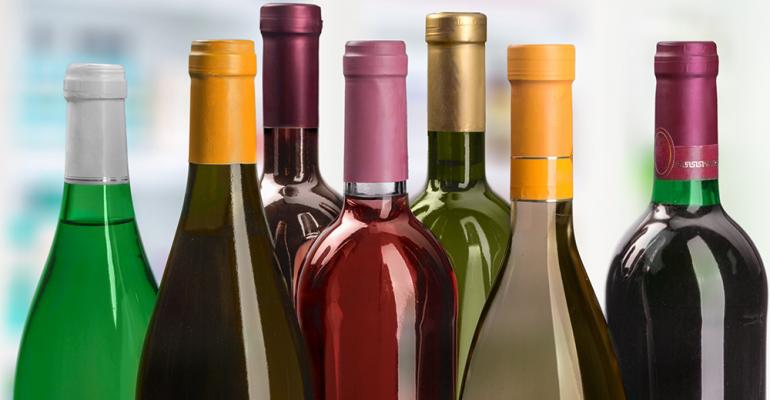Selecting which wines to purchase for your beverage list is akin to drafting your sports teams’ players for the season. Choosing them wisely can mean huge wins. Putting a bunch of bozos on the field can mean disaster.
With nearly 10,000 wineries in the United States, the pool of choices that a wine director has to wade through is dizzying. And everyone wants to play in our game — the United States has remained the largest wine market by volume since 2010. Picking the right wine for your list is a skill that takes years to perfect, and decades to master.
“Building a wine list is like completing a puzzle. There are surprisingly a lot of factors that go into the selection of wines,” said Katelyn Peil, beverage director for Heavy Restaurant Group in Seattle and Woodinville, Wash. She oversees two very different operations: Purple Cafe & Wine Bar, featuring 70 wines by the glass, and approximately 350 total selections; and The Commons, a neighborhood gathering place with 10 wines by the glass, and about 30 wines total.
“I have different methods based on which location I am making the menu for,” she said. “First and foremost, for both locations, the wine must fit into our culinary program. I work with the chef and the back-of-the-house team to ensure our menus are cohesive. And I need something that satisfies people who like sweet wines, dry wines, oaked wines, unoaked wines, etc., while still maintaining price points and regions that are diverse enough, yet cohesive.”
Thinking of the list as a holistic set of offerings that compliment each other is key.
“First thing I think is, ‘Does the wine have a place on my list and does it taste good?’," said Wendy Shoemaker, head sommelier at Californios in San Francisco. “A list needs to contain good lower-end bottle prices, along with the well-known higher end [wines]. A range of styles is important. You as the buyer may not like a certain style, but your guest might. And not having that type of wine on the list is leaving money on the table. Always remember we are in the business to sell wine.”
Keeping in mind that a wine list is there to serve the guest, not the sommelier’s ego, must always be kept at the forefront, but that’s not to say that guests aren’t ready for an adventurous recommendation.
“There has to be a balance of meeting the needs of my guests by sticking to the basics, as well as making room for wines that exist outside of the box,” said Seth Wilson, wine director at Booth One in Chicago. “My favorite game to play with guests is the wine trust-fall. I enjoy building faith with my guests with things they already know, and then having them give me the reins to bring them somewhere else totally unexpected and really rocking their world. Since I try so many wines throughout my week, I like to be introduced to, and promote, winemakers that don't mind being playful and taking a chance by making wines that will really mark a memory.”
In addition, wine directors find that they become advocates, and telling the stories of wine producers can make their products more attractive to guests.
“As much as the region, price and quality are key requirements for you to run a fun and extensive offering, it’s just as important to become ambassadors of the people behind the label,” said Augusto Ferrarese, corporate beverage director for Urban Kitchen Group in San Diego. He oversees five restaurant programs, and purchases more than $2.5 million of wine each year. “I have met winemakers from all over the world, and I make sure to tell their stories tableside and share the passion they gave me when I met them. The people behind the wine are as special as the wine itself.”
Sometimes, simple logistics can come into play, too.
“I may take into consideration the type of closure on the wine,” said Peil of Heavy Restaurant Group. “If there are two Cabernets from similar regions, with equivalent price and quality, I may choose a stelvin closure (screw cap) over a cork if I am considering it for a glass pour. This can lead to efficiency in the bar and ease for the bar staff on those fast-moving products.”
But concept awareness is paramount.
“Buyers should align their program with the overall brand of the establishment,” said Tim O’Brien, who has been beverage director at Salty’s in Seattle for 24 years. “Northwest wines with the freshest northwest seafood, for instance. I love it when I understand a wine because it makes a statement about where it came from. I’d also advise treating vendors with respect and developing a solid relationship. Over time, I expect them to know my brand, and to be able to make presentations that are appropriate.”
And just like a sports team manager, once you know the score on the field, it’s absolutely encouraged to riff and take some risks.
“Don't be afraid to have fun with your buying and have faith in what you already know,” Wilson said. “You got to this position for a reason, so don't just follow the cookie-cutter strategy because it's easy. Go against the status quo and take yourself, and your guest, somewhere they have never been, and instill in them a moment that they won't forget.”
David Flaherty has more than 20 years of experience in the hospitality industry. He is a certified specialist of wine, a certified cicerone and a former operations manager and beer and spirits director for Hearth restaurant and the Terroir wine bars in New York City. He is currently marketing director for the Washington State Wine Commission and writes about wine, beer and spirits in his blog, Grapes and Grains.




